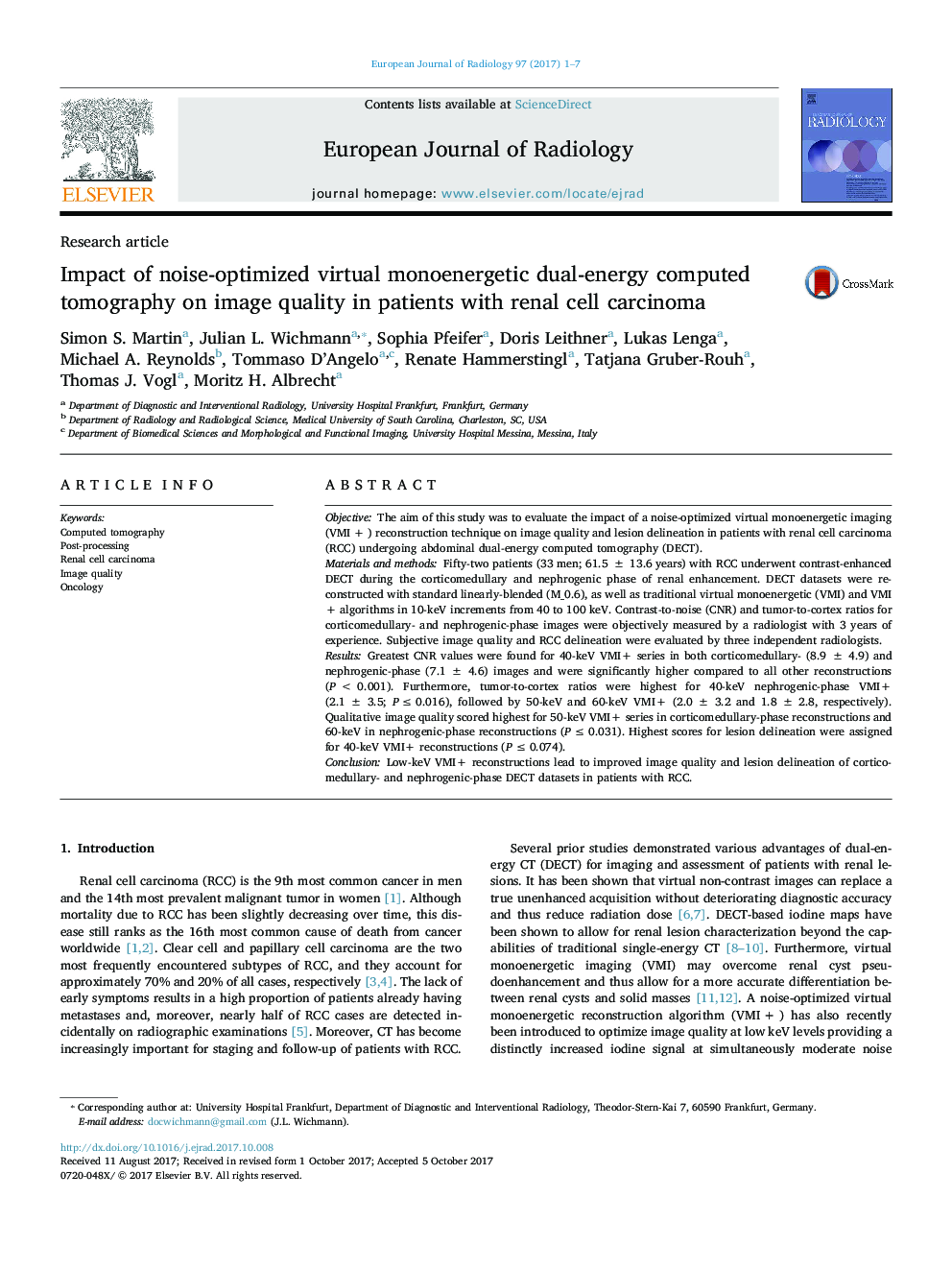| کد مقاله | کد نشریه | سال انتشار | مقاله انگلیسی | نسخه تمام متن |
|---|---|---|---|---|
| 5725974 | 1609723 | 2017 | 7 صفحه PDF | دانلود رایگان |
- DECT enables post-processing of noise-optimized virtual monoenergetic images.
- VMI+ reconstructions at low-keV levels significantly improve image quality of RCC.
- Highest CNR and tumor-to-cortex ratios were observed for 40-keV VMI+ series.
- Highest scores for RCC lesion delineation were assigned for 40-keV VMI+.
ObjectiveThe aim of this study was to evaluate the impact of a noise-optimized virtual monoenergetic imaging (VMI + ) reconstruction technique on image quality and lesion delineation in patients with renal cell carcinoma (RCC) undergoing abdominal dual-energy computed tomography (DECT).Materials and methodsFifty-two patients (33 men; 61.5 ± 13.6 years) with RCC underwent contrast-enhanced DECT during the corticomedullary and nephrogenic phase of renal enhancement. DECT datasets were reconstructed with standard linearly-blended (M_0.6), as well as traditional virtual monoenergetic (VMI) and VMI+ algorithms in 10-keV increments from 40 to 100 keV. Contrast-to-noise (CNR) and tumor-to-cortex ratios for corticomedullary- and nephrogenic-phase images were objectively measured by a radiologist with 3 years of experience. Subjective image quality and RCC delineation were evaluated by three independent radiologists.ResultsGreatest CNR values were found for 40-keV VMI+ series in both corticomedullary- (8.9 ± 4.9) and nephrogenic-phase (7.1 ± 4.6) images and were significantly higher compared to all other reconstructions (P < 0.001). Furthermore, tumor-to-cortex ratios were highest for 40-keV nephrogenic-phase VMI+ (2.1 ± 3.5; P â¤Â 0.016), followed by 50-keV and 60-keV VMI+ (2.0 ± 3.2 and 1.8 ± 2.8, respectively). Qualitative image quality scored highest for 50-keV VMI+ series in corticomedullary-phase reconstructions and 60-keV in nephrogenic-phase reconstructions (P â¤Â 0.031). Highest scores for lesion delineation were assigned for 40-keV VMI+ reconstructions (P â¤Â 0.074).ConclusionLow-keV VMI+ reconstructions lead to improved image quality and lesion delineation of corticomedullary- and nephrogenic-phase DECT datasets in patients with RCC.
Journal: European Journal of Radiology - Volume 97, December 2017, Pages 1-7
